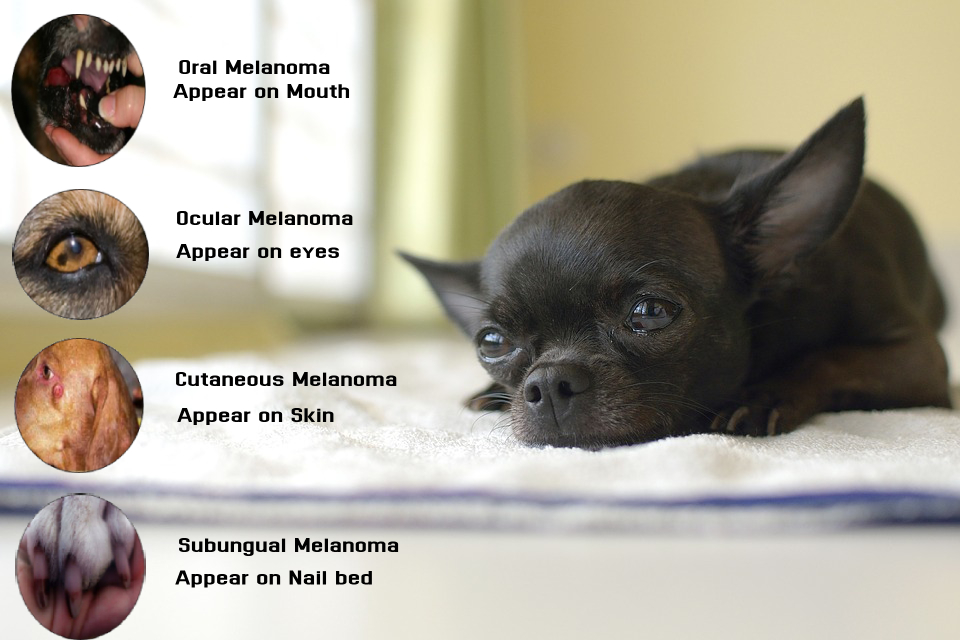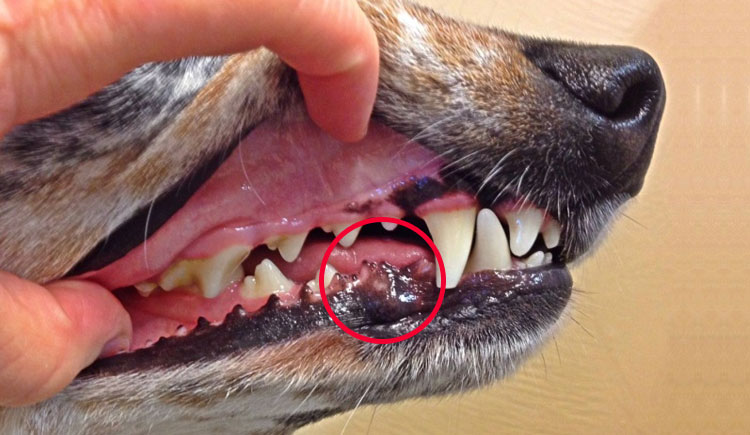Dogs are a man’s best friend, without a doubt. They bring us so much joy and happiness and make our lives complete. But unfortunately, these fun-loving four-legged friends are infected with a plethora of diseases despite our best efforts of keeping them well protected. One such disease that can affect dogs is called Melanoma, which can be both benign and malignant. Treating this disease early is essential, but before we dive into the treatment methods, it is important to first talk about what Melanoma is all about, its types and of course its symptoms.
What Is Canine Melanoma?
Melanomas are cancerous cells and are known as melanocytes. They are found in the body of dogs and produces hair and skin pigments. These melanocytes can occur in various parts of the body such as the skin, eyelids, nail bed and mouth. Melanoma occurring on the skin and eyelids are benign melanomas while the ones that occur near the mouth and nail bed are malignant melanomas. Malignant melanomas are harmful and can be very dangerous.
What Are The Types Of Melanoma In Dogs?
The different types of melanomas can be classified as follows:

Melanoma In Dogs
What Are The Symptoms Of Melanoma In Dogs?
Melanomas don’t generally show any immediate sign of illness, but if the following symptoms are detected, visit a vet as soon as possible.
- Bad breath
- Chewing or licking affected areas
- Cloudy eyes
- Darkening of the iris
- Dropping food from mouth
- Excessive salivation
- Eye redness
- Impaired vision
- Limping or labored walking
- Pigmented tumors
- Mass in the eyelid
- Muscle twitching around the eyes
- Ocular pain
- Raised sores or dark bumps on the skin
- Swellings
Read More: Cancer Facts about Dogs
How to Treat Melanoma in Dogs?
Only after your vet has diagnosed your dog with Melanoma should he select the best treatment method. The treatment for Melanoma will differ from one dog to another based on factors such as tumor’s location (type of Melanoma) and how much the cancerous cells have spread. Once done, the vet will opt for any of the following treatment methods.
- Surgery – In most cases, vets opt for surgery for the treatment of canine melanoma. Generally, benign lesions are removed so as to prevent them from becoming malignant. However, surgeries can also be performed for malignant melanoma where surgical removal of the mass is required. A dog’s jaw may have to be removed in cases of oral melanoma while amputation is performed in some cases of subungual melanoma.
- Chemotherapy or Radiation – Even after surgery if all the cancerous cells haven’t been removed or they have been spread; your vet will opt for chemotherapy or radiation to cure your buddy.
- Vaccination – Another method for treating Melanoma is by vaccination. Though vaccination causes the immune system to fight and attack the cancerous cells, they haven’t been that effective. However, thorough research on the effectiveness of vaccination is currently going on.
Dog Breeds Prone To Melanoma
Here is a list of dog breeds that are more likely to get affected with Melanoma.
- Boston Terriers
- Cocker Spaniels
- Doberman Pinschers
- Golden Retrievers
- Gordon Setters
- Irish Setters
- Miniature Poodles
- Schnauzers
- Scottish Terriers
In hindsight, Melanoma can affect other dog breeds too, especially those dogs aged between 5 to 11 years. Hence, keep your furry buddy safe and if you suspect any absurd signs, rush to vet and get him checked.
Read More: 6 Most Common Dog Diseases





